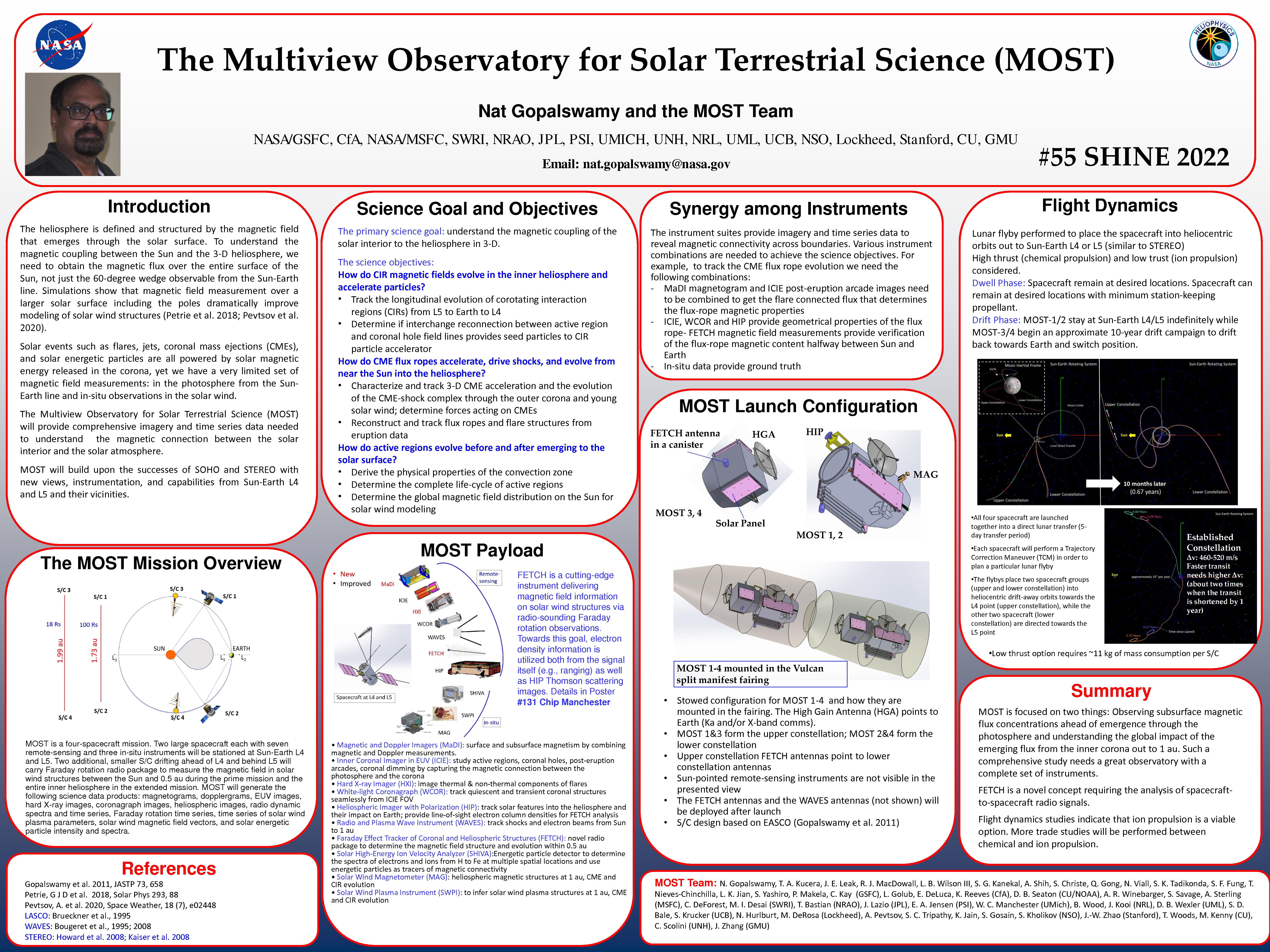Authors: Nat Gopalswamy (NASA/GSFC) and the MOST team
The Multiview Observatory for Solar Terrestrial Science (MOST) is envisioned as the next generation great observatory to provide necessary imagery and time-series data of the Sun to understand the magnetic coupling between the solar interior and the extended atmosphere. MOST will consist of 2 pairs of spacecraft located in the vicinity of Sun-Earth L4 and L5. The spacecraft stationed at L4 and L5 will carry seven remote-sensing and three in-situ instrument suites. The Multiview imagery will help obtain the 3D structure of transient features such as coronal mass ejections and corotating interaction regions. The Faraday Effect Tracker of Coronal and Heliospheric structures (FETCH) is a novel radio package with elements distributed on all four spacecraft to measure the magnetic content of solar wind structures using the Faraday rotation technique. The spacecraft ahead of L4 and behind L5 will carry just the FETCH elements. The MOST mission will be able to sample the magnetized plasma between the Sun and Earth during the mission lifetime. This poster provides an update of the mission study including flight dynamics and launch vehicle.


